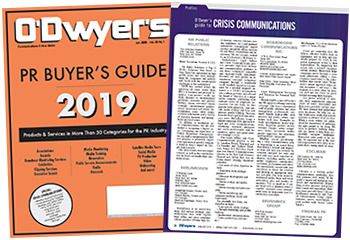 Andrew Friedman |
Many companies will face a crisis and most won’t have a communications plan in place when it hits. The most successful strategies manage — and even leverage — the unexpected.
Crisis PR experts love to talk about the value of scenario planning exercises, setting aside time and resources to imagine various potential calamities and how best to handle them. But while it’s always great to be as prepared, the people and companies faced with a communications crisis are often not the same as those that happened to invest in planning for just such a scenario.
So, when clients reach out for PR help, there aren’t existing PowerPoint decks to consult and phone notification chains to kick start.
Culled from our experience with the clients, stakeholders and lawyers we’ve worked with, as well as years spent working on the journalism side of the game, below are four key learnings from BerlinRosen’s Legal Affairs and Crisis Communications practice on what to do when day one of the engagement is also day one — or beyond — of the crisis.
|
|
Campaign strategies, not just PR strategies
As the parameters of “crisis communications” expand, crisis PR experts must function as campaign managers, coordinating all facets of a response rather than just flacking. Particularly in high-stress situations, clients need someone who, thinking objectively and even dispassionately, can build and execute a holistic plan very quickly. In addition to media strategy and media relations, strong crisis response strategies account for internal stakeholder (perhaps stockholder) concerns; potential legal, governmental or regulatory problems; validator engagement; digital and social collateral and more.
More than just drafting statements and talking to reporters, crisis strategists should be at the table with clients, offering real-time guidance on how various outcomes will be perceived across audiences, what anticipatory steps clients can take in the moment to stay ahead of a fast-moving story and where the blind spots are.
Find a simple theme, fast
Much like a political campaign, coordination works best when the various workstreams can all stem from a simple message or theme that’s digestible for any audience. In most cases, the more succinct, the better; don’t use seven words when four will do. Cut the overused buzzwords and, where possible, avoid legalese. “We’re sorry” will be better received than “even though we didn’t directly cause this mistake, we deeply and profoundly regret that it occurred.”
If you can’t convey your message in one or two succinct sentences, how can you expect reporters to do the same to their audiences? Once the team has settled on a central theme, it should guide everything from media relations to internal stakeholder communications to validator statements and background talking points to social collateral.
“Fast” is measured in minutes, not days
The best service you can provide to clients is helping them understand that today, “rapid” response will almost always need to be faster than they would prefer. It means getting an initial statement into the earliest writeups — and in a prominent place within them — because those are the ones that will proliferate on social media and set the tone. It means getting on conference calls at 10:00 P.M. because that’s when the next day’s New York Times story comes online with new comments from an adversary that may — or may not — merit a response. It means strategists keeping separate Tweetdeck columns open on every possible variation of relevant search terms, so you catch stories the moment they pop and push reporters for more balance.
As in much of crisis communications work, the window of opportunity to shape a story is simultaneously finite and open around-the-clock.
Play a short and long game
The initial phase of a crisis is not the time to be pushing positive news as a counterbalance. You can’t answer an inquiry about a client’s just-disclosed data breach last month with numbers on how much money that client gave to charity last year.
The goal of an initial crisis response is simply to take the initial punch and not fall down. To all relevant audiences, communicate understanding of the issue, acceptance of responsibility and determination to fix the problem and stop there. In the short term, counsel clients against shoehorning positive — but entirely unrelated — attributes, accomplishments or intentions into a crisis response, both because it will seem awkwardly defensive and because no one will pay attention to it anyway.
Instead, once you’ve stemmed the bleeding, go dark for a period of time. Give the client’s customers or stakeholders time to realize that everything is likely resolved; give the client time to recover from the emotional rollercoaster that a crisis can be; give the press time to shift focus to some other crisis-du-jour. Use the downtime to help a client plan a strategic reemergence that, a month or two down the road, you can help roll out.
***
Andrew Friedman is SVP of Legal Affairs and Crisis Comms. at BerlinRosen.



 There’s a fine line between newsjacking and taking advantage, aka ambulance chasing. Our job as PR professionals is to tread it carefully.
There’s a fine line between newsjacking and taking advantage, aka ambulance chasing. Our job as PR professionals is to tread it carefully. PR firms need to be mindful of ways their work product may be protected by the attorney-client privilege whenever working with a client’s internal legal team or its external legal counsel.
PR firms need to be mindful of ways their work product may be protected by the attorney-client privilege whenever working with a client’s internal legal team or its external legal counsel. Manuel Rocha, former US ambassador and intenational business advisor to LLYC, plans to plead guilty to charges that he was a secret agent for Cuba.
Manuel Rocha, former US ambassador and intenational business advisor to LLYC, plans to plead guilty to charges that he was a secret agent for Cuba. CEO mentoring is an often-overlooked aspect of why CEOs are able to make good decisions, and sometimes make bad ones—all of which intersects with the role and duties of a board.
CEO mentoring is an often-overlooked aspect of why CEOs are able to make good decisions, and sometimes make bad ones—all of which intersects with the role and duties of a board.  How organizations can anticipate, prepare and respond to crises in an increasingly complex world where a convergent landscape of global challenges, threats and risks seem to arrive at an unrelenting pace.
How organizations can anticipate, prepare and respond to crises in an increasingly complex world where a convergent landscape of global challenges, threats and risks seem to arrive at an unrelenting pace.


 Have a comment? Send it to
Have a comment? Send it to 
No comments have been submitted for this story yet.